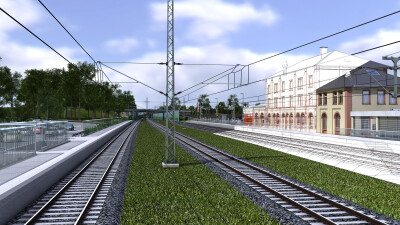Earlier this year, in an effort to further advance their standing in the creation of digital twins, Hexagon announced a new strategic partnership with LocLab, a 3D digital twin creation firm based in Germany. With that partnership, Hexagon stated that they were aiming to “empower industries with Smart Digital Realities in their design, construction and operation processes.” As we’ve noted recently, this kind of technology extending more consistently into the operational phase of a building’s lifecycle is a trend we expect to pick up in 2023. The latest news from Hexagon further backs up that idea. The company today made clear that they’ll be taking the next step in this partnership, announcing their acquisition of LocLab.
This acquisition further strengthens this partnership and should even more seamlessly merge the expertise of these two firms to become a true leader in the creation and maintenance of full-lifecylce digital twins. LocLab allows the creation of 3D models of a space using as little as just photos or videos, including the use of videogrammetry, with other technology also accepted. The firm’s artificial intelligence then is able to “compare objects detected in a created model with the software’s object library of 3D elements to semi-automate the creation of a semantically enriched 3D model,” per the press release for this acquisition. All of this will be combined with Hexagon’s well-established platform for hosting, sharing, and maintaining 3D digital twins.
With this announced acquisition, Hexagon is clearly outlining what they see as a major part of the future for construction, design, and building operations, with a clear throughline to the hypothesized “industrial metaverse.” As the ability to both create accurate 3D digital twins of everything from facilities to streets to entire cities, and to receive real-time data from different Internet of Things (IoT) sensors, increases, aided by AI-fueled software to quickly capture insights automatically, more adopters will crop up to make use of this technology. With these digital twins, operators can potentially see huge returns on investment, gaining the ability to detect potential maintenance and safety issues right away, train employees without having to shut down a floor, and run simulations to determine the most efficient processes available to them, among other use cases. This part of the industry is still in its relatively early stages, but this combination of two leaders in the space figures to put them in a good place to set trends.

LocLab has a number of connections in different industries taking advantage of their technology already, too. On their website, they call out transportation, energy, cities and other local governments, and large facilities like manufacturing plants as the main industries with which they’ve worked to implement operational digital twins. The company’s main software offering, the 3D Rocket Player in which users can view their digital twin, is a real-time player with 3D models acting, as LocLab notes, similarly to a digital piece of music within a music player. The player doesn’t require any installation or software license, and has a web version available.
With this acquisition, Hexagon is making another step forward in what they’ve dubbed their “Smart Digital Reality” strategy for the future of industry. Whether it’s thought of as digital twins, the industrial metaverse, or Industry 4.0, it all points towards a similar future discussed above to leverage technology to streamline building design, construction, and operations. In describing this Smart Digital Reality, Hexagon notes a “completely new level of ‘reality’ that is infinitely better.” Their strategy is around how the real world will intersect with the metaverse, a process that will be dominated by these types of digital twins.
On this acquisition, Hexagon’s President and CEO Ola Rollén said in a press statement, “The foundation of any smart digital reality is the underlying 3D model. If not already part of one of our solutions or readily available via our content program, it can be time and resource-intensive to create. LocLab's semi-automated modelling process with AI-based object recognition from video data and its enormous library of 3D digital content offers tremendous time savings and cost efficiencies.”
He continued, “The integration of LocLab's 3D digital content with HxDR, our cloud-based storage, visualisation, and collaboration platform, will drive HxDR's expansion as a leading digital reality platform within transportation, construction, urban planning, and many other industries. Altogether, LocLab's capabilities nicely complement our leading reality capture and software portfolio while also offering LocLab global scalability opportunities through our expansive sales and partner network.”
The terms of the acquisition have not yet been publicly released as of this writing. Once the deal is officially completed, LocLab will operate as part of Hexagon’s Geosystems division.







